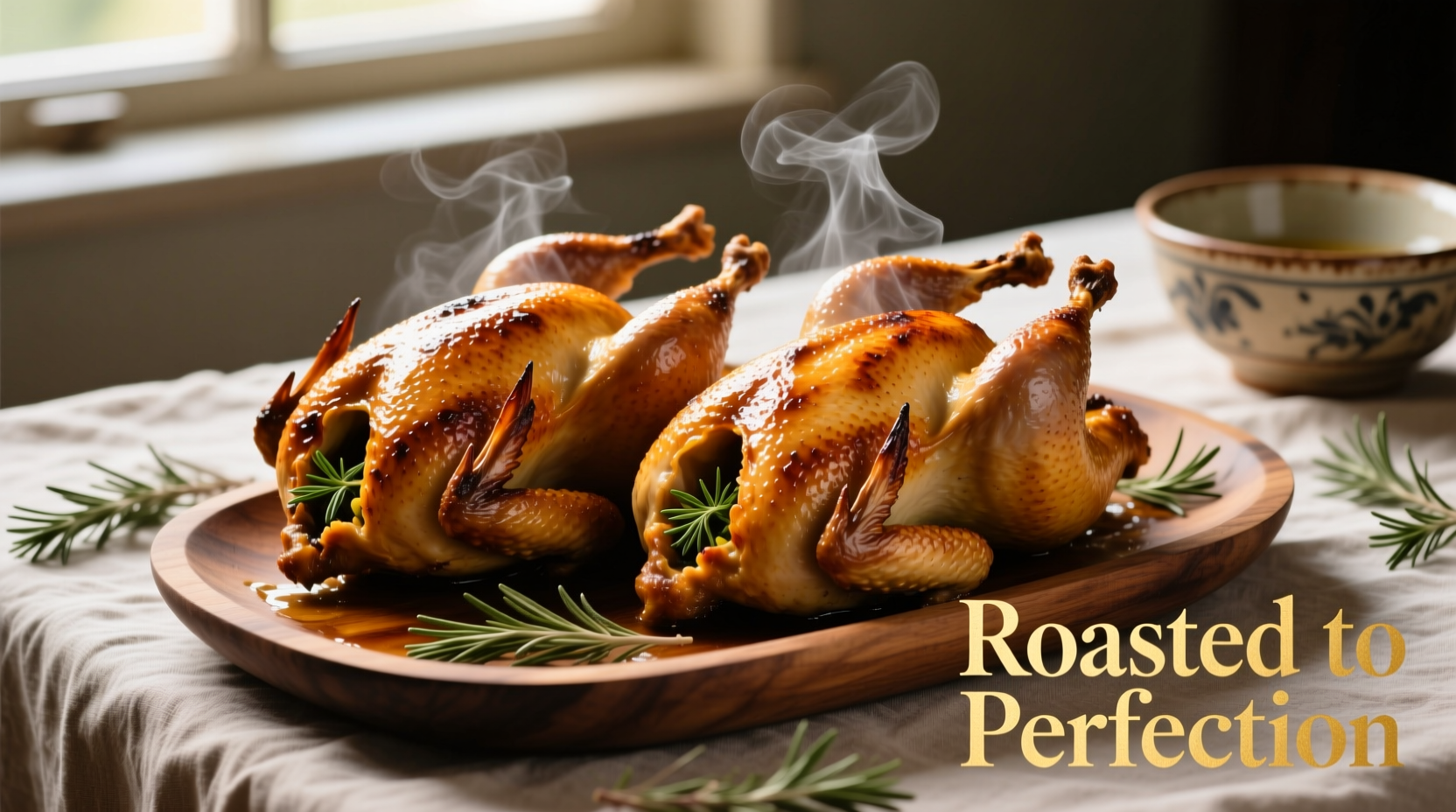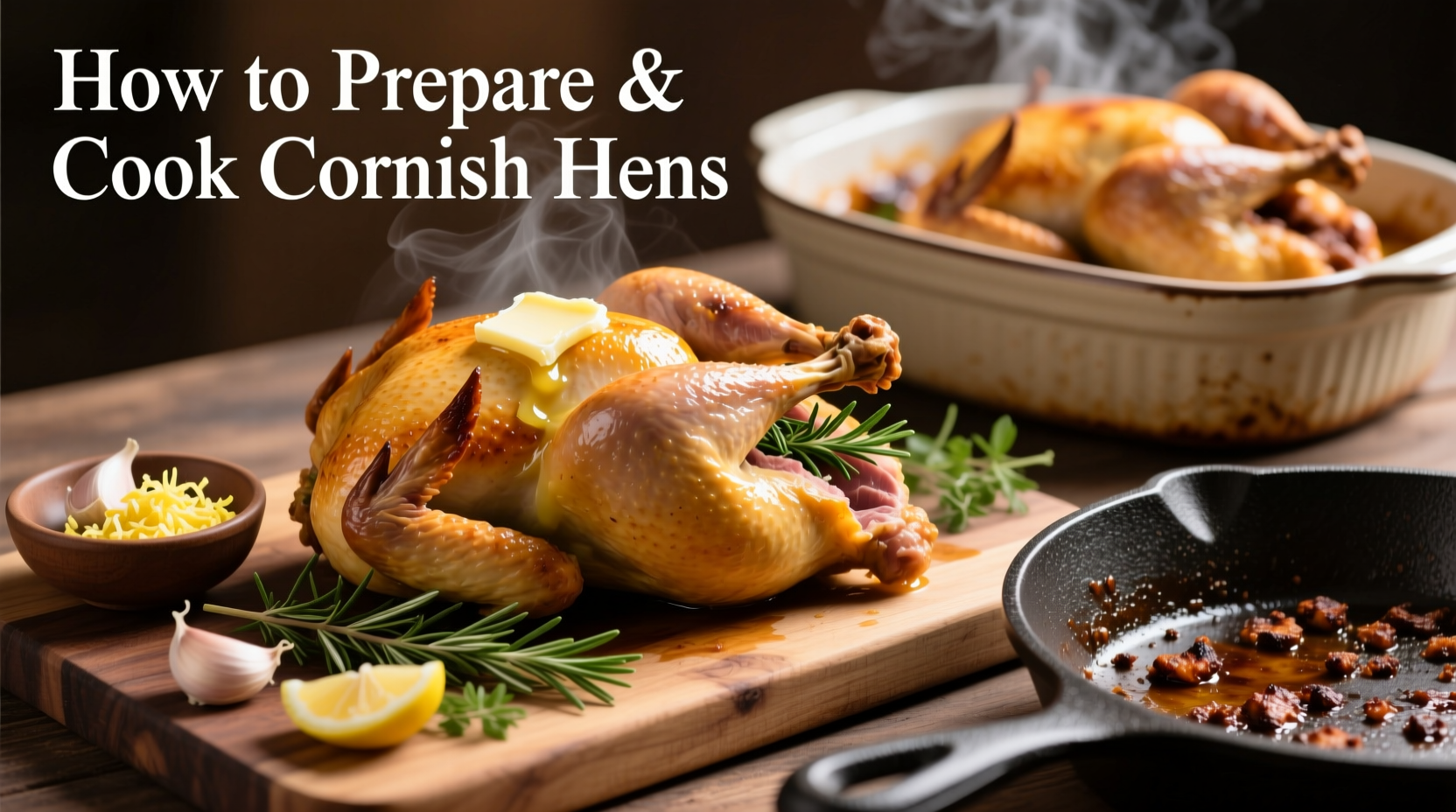Cornish hens make an impressive centerpiece for special dinners, but many home cooks struggle with dry meat or uneven cooking. As a chef who's prepared thousands of these delicate birds in both fine dining and casual settings, I've refined a reliable method that guarantees succulent results. Let's transform your Cornish hen experience with techniques that work whether you're cooking for two or entertaining guests.
Understanding Your Cornish Hens
Cornish game hens aren't actually game birds—they're young chickens weighing 1-2 pounds, harvested at 5-6 weeks old. Their small size means they cook quickly but require precise temperature control. When selecting birds, look for plump specimens with firm flesh and no discoloration. Most grocery store "Cornish hens" are actually Rock Cornish hens, a specific crossbreed developed for consistent size and tenderness.
| Cooking Method | Time Required | Best For | Temperature Range |
|---|---|---|---|
| Conventional Roasting | 60-75 minutes | Most reliable results | 375-400°F (190-205°C) |
| High-Heat Roasting | 45-55 minutes | Crispy skin enthusiasts | 425-450°F (220-230°C) |
| Air Frying | 35-45 minutes | Small households | 375°F (190°C) |
| Grilling | 50-65 minutes | Summer entertaining | Medium indirect heat |
Preparation: The Foundation for Success
Proper preparation separates good Cornish hens from exceptional ones. Start by thawing frozen birds in the refrigerator for 24-48 hours—never at room temperature. Pat the hens completely dry with paper towels; this critical step ensures crispy skin. For maximum flavor penetration, use a dry brine: generously season the cavity and skin with kosher salt (about 1 teaspoon per pound) and refrigerate uncovered for 12-24 hours. This draws out moisture initially, then allows the salt to be reabsorbed, seasoning the meat deeply while improving moisture retention during cooking.
Before cooking, bring the hens to room temperature for 30-45 minutes. This ensures even cooking. Truss the legs with kitchen twine to maintain shape and promote uniform heat distribution. Professional chefs often recommend butterflying Cornish hens for faster, more even cooking—a technique that reduces cooking time by 15-20% while creating an attractive presentation.

Mastering the Cooking Process
For classic oven roasting, preheat to 400°F (205°C). Place hens breast-side up on a rack in a roasting pan. Insert an instant-read thermometer into the thickest part of the breast, avoiding bone. Roast for 50-65 minutes until the internal temperature reaches 165°F (74°C) in the breast and 175°F (80°C) in the thigh. The skin should be deep golden brown and crisp.
For superior results, try the reverse sear method: Start at 275°F (135°C) for 30 minutes, then increase to 450°F (230°C) for the final 15-20 minutes. This technique prevents the delicate breast meat from overcooking while achieving perfect crispness. During the last 10 minutes, baste with melted herb butter for added flavor and shine.
When using alternative methods:
- Air frying: Cook at 375°F for 35-45 minutes, flipping halfway through
- Grilling: Use indirect heat with a drip pan, maintaining 350-375°F
- Spatchcocking: Butterflying reduces cooking time to 35-45 minutes while ensuring even browning
Testing for Perfect Doneness
Never rely solely on cooking time—internal temperature is your most reliable indicator. Insert your thermometer into the meatiest part of the breast and thigh, avoiding contact with bone. The USDA Food Safety and Inspection Service confirms poultry is safe at 165°F (74°C), but for optimal juiciness, remove hens from heat at 160°F (71°C) as they'll continue cooking while resting.
Additional doneness indicators include:
- Juices running clear when pierced
- Legs moving freely in their joints
- Meat pulling away slightly from the bones
Always let hens rest for 10-15 minutes before carving. This allows juices to redistribute, preventing dryness when slicing. Tent loosely with foil during resting to maintain warmth without trapping steam that would soften the skin.
Serving and Pairing Suggestions
Cornish hens shine when paired with complementary flavors. Classic accompaniments include:
- Roasted root vegetables (carrots, parsnips, potatoes)
- Creamy polenta or wild rice pilaf
- Simple pan sauce made from drippings, white wine, and fresh herbs
For presentation, serve each guest their own hen for an elegant individual portion. Garnish with fresh thyme sprigs and lemon wedges. The American Egg Board recommends pairing poultry dishes with medium-bodied white wines like Chardonnay or light reds such as Pinot Noir.
Troubleshooting Common Issues
Dry breast meat: This typically occurs from overcooking. Try brining, butterflying, or using a probe thermometer for precise temperature control.
Pale skin: Ensure your oven is fully preheated and the birds are completely dry before roasting. For extra crispness, brush with melted butter during the last 15 minutes of cooking.
Uneven cooking: Rotate the pan halfway through cooking. If using a convection oven, reduce temperature by 25°F (15°C) and check for doneness 10 minutes early.
Smaller birds finishing first: Remove perfectly cooked hens from the oven and tent with foil while larger birds finish cooking.
Remember that cooking times vary based on your specific oven and bird size. The National Chicken Council confirms that proper cooking temperature is more critical than exact timing for food safety and quality.











 浙公网安备
33010002000092号
浙公网安备
33010002000092号 浙B2-20120091-4
浙B2-20120091-4